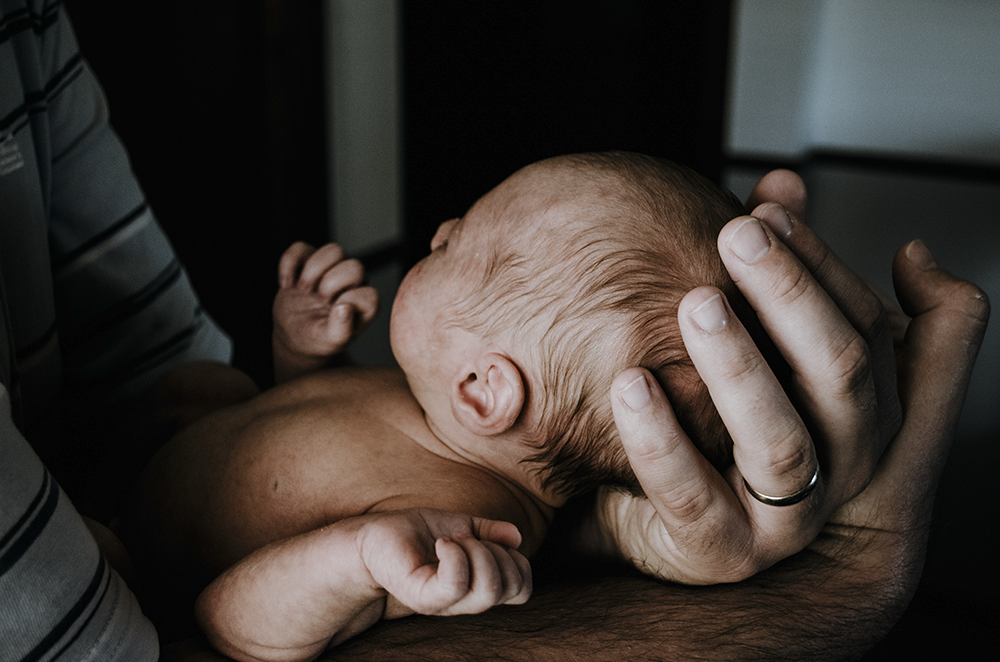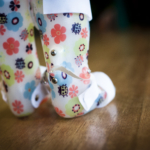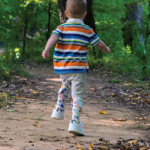3 Easy steps to prevent and treat flat head syndrome

By Nurse Nat, June 24, 2019
| What is flat head syndrome? |
Flat head syndrome is also known as plagiocephaly, (“plagio-” means slanted or oblique and “-cephaly” means head). It is also known as positional or deformational plagiocephaly.
It is where the back or the side of the baby’s head becomes flat, asymmetrical or slanted. Sometimes, the baby’s head may also widen and the forehead bulges out in more severe cases. This is due to prolonged external pressure on one spot of the newborn’s soft and malleable skull.
It is more common today because of the Safe to Sleep® campaign recommending that babies sleep on their backs in the first few months of life to prevent SIDS (Sudden infant death syndrome).
Other causes of flat head syndrome include the following:
- Medical problems or delayed development which makes it harder for babies to move and change positions
- Stiff or tight neck muscles limiting neck movement (Torticollis)
- Premature babies have softer skulls than full term babies and also move their heads less
- Plagiocephaly can also occur in the womb such as overcrowding with twins or the mothers womb has an unusual shape
| SIDS |
SIDS (Sudden Infant Death Syndrome) is the death of a healthy baby who is less than a year old during sleep (also known as crib death). The cause of death is unknown even after a complete investigation but is believed to be linked to defects in the baby’s brain that controls breathing and arousal from sleep. It is also said to be a combination of physical and environmental factors in the baby’s sleeping environment such as in the crib, however research is still ongoing.
I highly recommend mothers to visit this website, Safe to Sleep® campaign to learn about SIDS and how to reduce the risks.
| Should I be concerned about plagiocephaly? |
Experts have dismissed plagiocephaly as an aesthetic issue because not everyone has a perfectly round shaped head. Also, it is also believed that asymmetrical heads should resolve itself over time as the baby grows.
Because flat head syndrome is a fairly new concern, there is limited studies on the matter. There is a 2010 study from Seattle Children’s hospital that has found an association between flat head syndrome and developmental delays, specifically motor, language and cognitive delays.
This means there is no actual cause and effect between flat heads and child development but there is some link between the two. In fact, the study suggests that a flat head may be a marker to identify children who are at risk for developmental delays, not that flat heads actually cause such delays. Unfortunately, there is no clear answer at this time and research is still ongoing.
Learn more about this study at Seattle Children’s Hospital web site.
Plagiocephaly may also be mistaken with craniocynostosis which is very different! Craniocyntosis is where the baby’s skull fuses too early preventing normal development of brain growth. Babies with craniocyntosis will have uneven head shapes and this may also look like flat head syndrome. Check with your doctor to make sure!
| Treatment & Management |
Treatment depends on your health care provider, the age of your baby, the potential cause and so forth. It is very important that you seek professional medical help if you are concerned!
Your baby’s soft skull will start to fuse together and harden at about 9 to 18 months.
If the cause of your baby’s flat head syndrome is due to how they sleep, nap and lay, treatment may include positioning your baby’s head in different ways and avoiding pressure on the flat spot. It is also important to limit the time your baby spends in their bouncers, car seat or anything that applies pressure to certain parts of their head.
If your baby is diagnosed with stiff neck muscles (torticollis), your doctor may recommend special exercises or refer you to a physiotherapist.
If after 6 months, there is no improvement after trying to reposition your baby’s head first, your doctor may recommend helmet therapy. The plastic helmet, lined with foam fits snugly on the round parts of your baby’s head, and loosely on the flat spots to allow the flat spot to expand and even out as your baby grows. Generally they are worn for about 23 hours every day from about 1 to 6 months but it depends on your child’s age and case. Also, helmets can be very pricey!
| How we fixed our baby’s flat spot with 3 easy steps |
A few months ago my baby started to develop a flat spot on the back of her head and I freaked out! I always put her down on her back for naps and at night (especially after reading about SIDS!) And I will admit that I put her in her bouncer when I’m busy around the house, and I let her finish her nap when she falls asleep in the car seat on our way home. I realized that all of these habits had contributed to her flat head syndrome!
I had spoken to my doctor about her flat spot and she said that I shouldn’t be too concerned because naturally, no one has a perfectly round head. Also, preventing SIDS far outweighs the concerns that comes with flat head syndrome. I mentioned that I had done some research about flat head syndrome and developmental delays but she assured me that more research is needed to conclude this hypothesis. After much discussion, she provided me with simple, at home measures that I could take to gradually mold my baby’s head naturally without a pricey helmet.
Today she is 6 months old and her head is as “naturally” round as can be.
With 3 simple steps, this is how we did it.
| 1. Repositioning |
The first tip to try is to reposition your baby when he or she sleeps and naps. There are a couple of ways to reposition your baby without having to put them on their sides or stomach. Remember to always place your baby on their backs and for peace of mind, turn on that baby camera when your not in the room!
First, use interesting objects or toys that catch your baby’s attention such as a baby mobile. Position the mobile where you want your baby to turn his or her head when they lay on their backs.
Check out our post about the Top 5 Reasons why You Need a Crib Mobile.
Another tip is to place your baby the other way in the crib. For example, if your baby’s feet is towards to door of the room, instead place your baby’s head towards the door.
Lastly, you can also try rearranging your nursery in the room. Moving the crib to a different area in the room can help to move your baby’s head in a different direction.
| 2. Lots of Supervised Tummy Time |
Tummy time is vital, not only for relieving the pressure off of baby’s head but also to help strengthen neck and shoulder muscles for crawling and sitting up. It also improves your baby’s motor skills.
Babies should be on their tummies for at least 2-3 times per day for short periods of time right from birth. As they get older, allow them to spend more time on their tummies with each session. Try not to leave your baby unsupervised when on tummy time! Also, never leave your baby on tummy time (or in any position) on a high area such as the bed or changing table. They may roll over and fall!
Tips for tummy time:
- Lay out a blanket on the floor
- Place their favourite toy within baby’s reach and help them learn to play and interact with their surroundings
- Tummy time after a nap and diaper change is ideal
- Avoid tummy time right after a feed, they may spit it all up!
- Never leave baby unattended during tummy time
| 3. Head Molding Pillows |
Right now, I’m using Babymoov Lovenest baby head support pillow when my baby sleeps or naps. She sleeps through the night for about 9 hours straight which applies a lot of pressure on the back of her head!
It is so important to put your baby down on their backs but this is probably one of the reasons why my baby developed a flat spot on the back of her head. So I did some research and found the Babymoov Lovenest pillow on Amazon and had to give it a try. This pillow significantly relieves the pressure off of my baby’s head and I truly recommend it. I use this pillow every time I lay her down. It comes in a variety of colors. The fabric is soft, breathable and machine washable. If you don’t believe me, check out their reviews on Amazon!
With these 3 simple tips, we saw a difference in just one month! Today, our baby is 6 months old and we continue to implement these steps when she sleeps. Her flat spot has evened out and we are very happy with the results!
Does you baby have a flat spot? Share your story. We love to hear from you.
| Nurse Nat |
| My name is Natalie and I am a Registered Nurse in Ontario, Canada. I am also a new mom! My partner is an experienced and talented chef. Along with our 8 month old baby girl and 11 year old son, we hope to share our experiences with family, health, food – and everything in between! |
Source Nurse Nat






